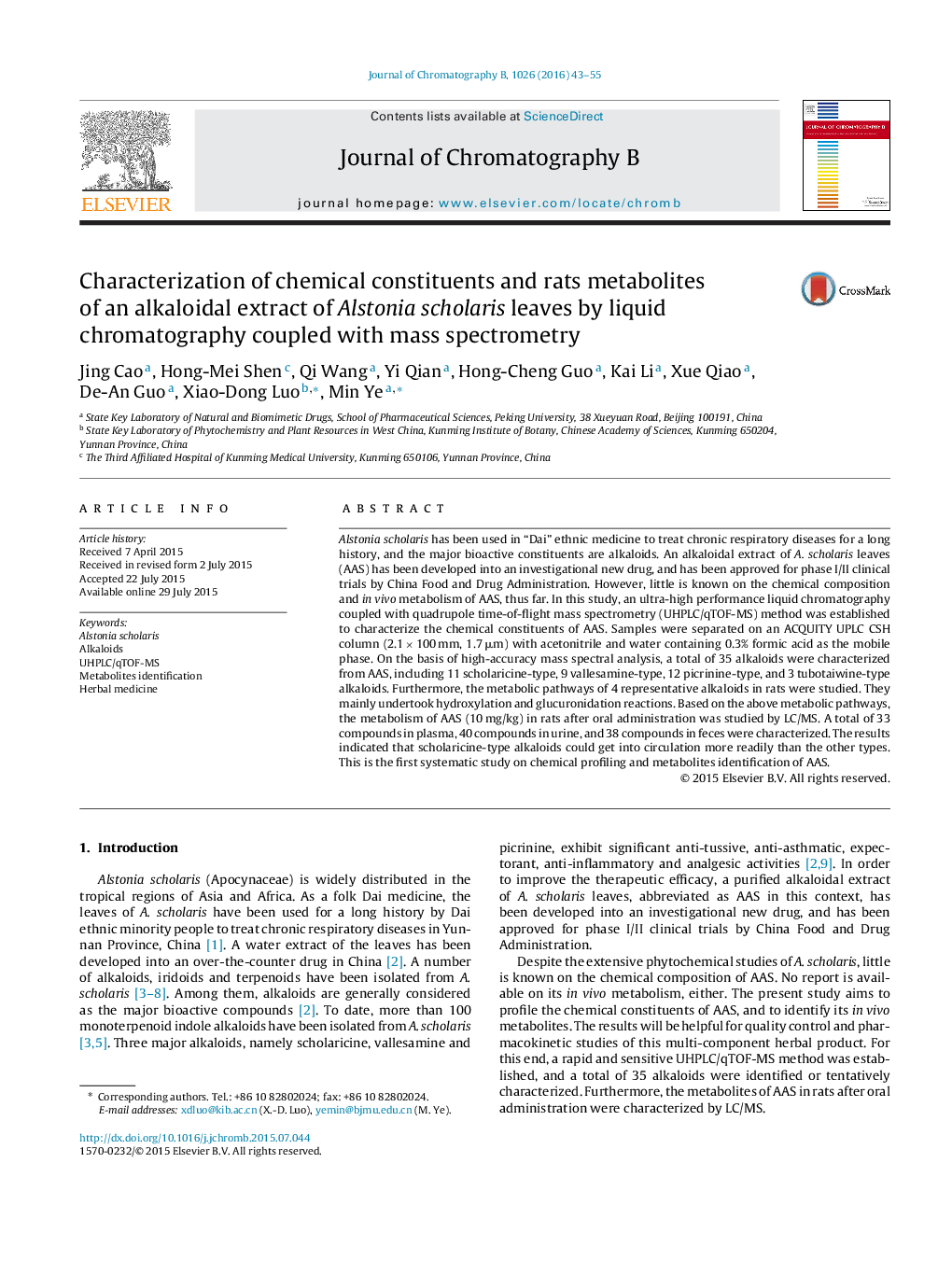| Article ID | Journal | Published Year | Pages | File Type |
|---|---|---|---|---|
| 1211776 | Journal of Chromatography B | 2016 | 13 Pages |
•We systematically analyzed the constituents and metabolites of AAS.•A total of 35 alkaloids in AAS were identified by UHPLC/qTOF-MS.•Metabolic pathways of 4 representative alkaloids were proposed.•33 metabolites were identified in rats plasma at a 10 mg/kg dosage of AAS.•Scholaricine-type alkaloids were the major absorbed components of AAS.
Alstonia scholaris has been used in “Dai” ethnic medicine to treat chronic respiratory diseases for a long history, and the major bioactive constituents are alkaloids. An alkaloidal extract of A. scholaris leaves (AAS) has been developed into an investigational new drug, and has been approved for phase I/II clinical trials by China Food and Drug Administration. However, little is known on the chemical composition and in vivo metabolism of AAS, thus far. In this study, an ultra-high performance liquid chromatography coupled with quadrupole time-of-flight mass spectrometry (UHPLC/qTOF-MS) method was established to characterize the chemical constituents of AAS. Samples were separated on an ACQUITY UPLC CSH column (2.1 × 100 mm, 1.7 μm) with acetonitrile and water containing 0.3% formic acid as the mobile phase. On the basis of high-accuracy mass spectral analysis, a total of 35 alkaloids were characterized from AAS, including 11 scholaricine-type, 9 vallesamine-type, 12 picrinine-type, and 3 tubotaiwine-type alkaloids. Furthermore, the metabolic pathways of 4 representative alkaloids in rats were studied. They mainly undertook hydroxylation and glucuronidation reactions. Based on the above metabolic pathways, the metabolism of AAS (10 mg/kg) in rats after oral administration was studied by LC/MS. A total of 33 compounds in plasma, 40 compounds in urine, and 38 compounds in feces were characterized. The results indicated that scholaricine-type alkaloids could get into circulation more readily than the other types. This is the first systematic study on chemical profiling and metabolites identification of AAS.
